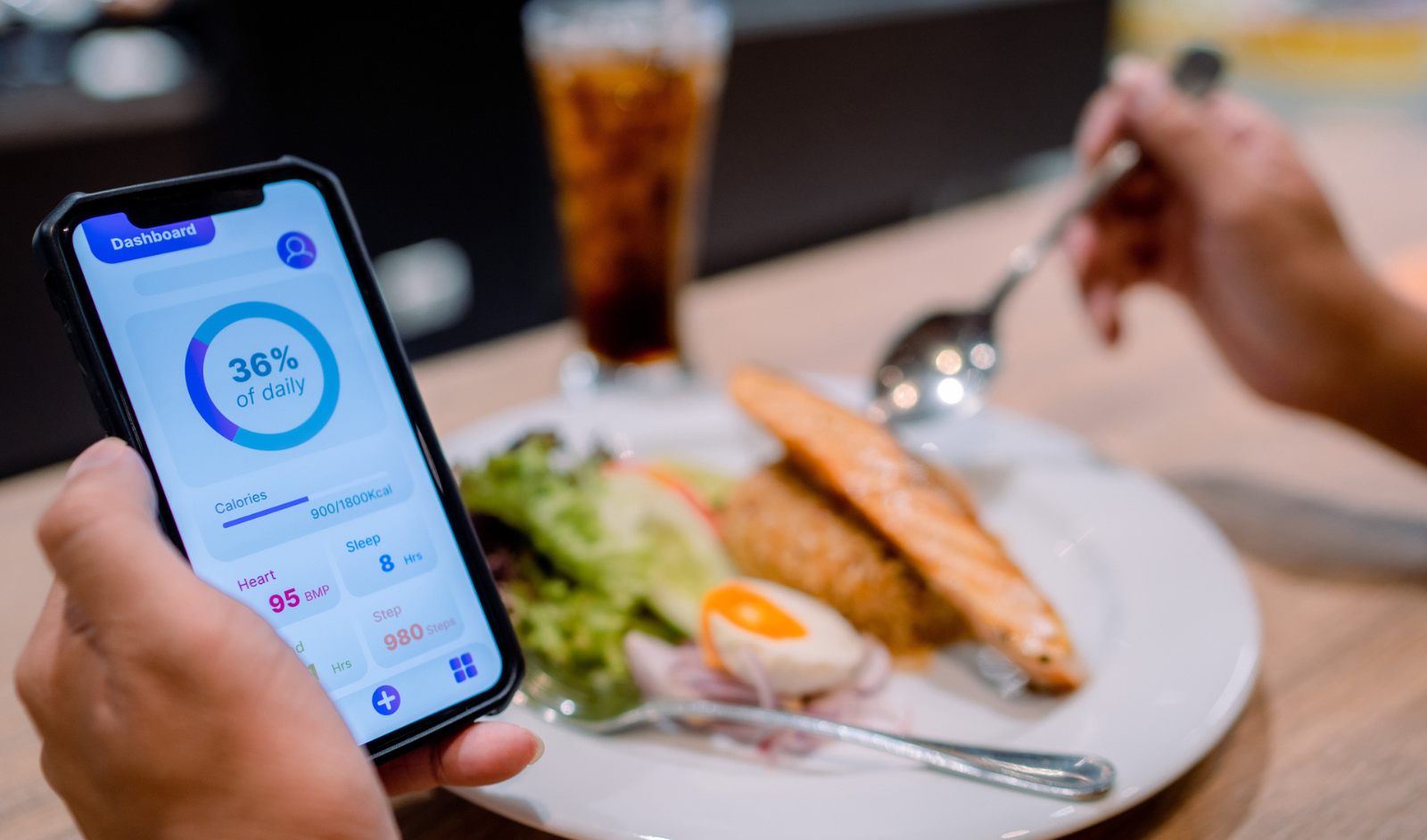Calorie Density: Throw Your Calorie Counter Away
Counting calories can be a daunting task, and it doesn’t take into consideration where those calories came from. Calorie density, on the other hand, shifts the focus to the types of foods we are consuming.

The second problem is: Counting calories does not guarantee satiety, or fullness. Let’s revisit that Egg Muffin and two slices of pizza. Is this amount of food really going to satisfy your hunger for the entire day? No way! You keep craving food, and you keep coming back for more. Three slices of pizza. Then four. Then more. It’s only natural.
So instead of calorie counting, the dietitians and doctors at the Pritikin Longevity Center focus on heaping lots of good healthy food on your plate, but with each bite you’re just naturally taking in a small amount of calories. It’s smart eating. It involves knowing the calorie density of the foods you’re eating. It keeps you full and happy, which means you’re far less likely to go places (those multiple slices of pizza) you ought not to go.
Simply put, calorie density is the number of calories in a given volume of food. Certain foods have more calories packed into them – pound for pound – than others. That means each food has its own caloric density. Fresh tomatoes, for example, have just 90 calories per pound. Bagels are packed with more than 1,200 calories per pound. (Get the idea? With each bite of bagel, you’re taking in 13 times as many calories as each bite of tomato. Yikes!) Another easy way to think about calorie density is the “concentration” of calories in a food. Bagels are more “concentrated” in calories than tomatoes.
Knowing the caloric density of foods (it’s really easy to learn) is the simplest and most accurate way to determine whether a particular food or combination of foods will fatten you up or help you lose weight. To get started, check out the easy-reference chart at the end of this article. When you’re on calorie density “watch,” you’re getting a lot of nice satisfying bites, and eating till you’re comfortably full, without going overboard on calories.
Your goal is choosing foods that are LOW in calorie density. Usually, low-calorie-dense foods are high in WATER and FIBER. These foods are very filling, but don’t ratchet up a bunch of waistline-busting calories. Examples include vegetables, fruits, cooked whole grains, oatmeal, cooked beans and legumes, nonfat dairy and soy products, and lean animal proteins.
Foods that are HIGH in calorie density tend to be DRY and/or FATTY. These foods don’t take up a lot of space (on your plate or in your stomach), but they have a HIGH calorie cost. Each bite is JAM PACKED with calories. Examples include butter, oils, salad dressings, sugar, nuts, seeds, dry bread, dry cereal, crackers, egg yolk, avocado, dried fruit, red meat, and yes, Egg Muffins and pizza. As you can see from the chart below, oils are the most calorie-dense foods on the planet. Just two measly tablespoons of olive oil is the caloric equivalent of four oranges. Four! That’s why covering your salad with ladles of regular salad dressing is such a disaster for your waistline. You might as well have ordered a pizza.
Notice that the low-calorie-dense foods have one other big bonus. They not only fill your plate with a lot of satisfying food, they fill you up with vitamins, minerals, fiber, and phytonutrients aplenty. Filling up on nutritious, low-calorie-dense foods is the way to lose excess weight and lower blood pressure and cholesterol levels, and control blood sugars.
The fact is, we could easily reverse our country’s exploding health care budget if we threw out all the calorie counters and followed a simple calorie density chart instead (like the one below). There are just three key rules:
- The more foods in the first two categories (veggies and fruits) you eat, the better.
- For at least 90 percent of your daily diet, stick with the categories in bold (the first five categories).
- Pick one food from the next category (seafood, lean poultry, lean red meat) – and no more than 4 ounces a day – to keep your arteries in good shape.
| FOOD | CALORIES PER POUND |
|---|---|
| Vegetables | 65 to 195 |
| Fresh Fruits | 135 to 420 |
| Potatoes, pastas, brown rice, sweet potatoes, corn, hot cereals | 280 to 650 |
| Legumes: peas and beans, such as pinto, garbanzo, black, and lentil beans | 400 to 750 |
| Nonfat dairy foods | 180 to 450 |
| Seafood, lean poultry, lean red meat | 400 to 870 |
| Dried fruit, jams, fat-free muffins and breads, including sourdough rolls, bagels, pita breads, and baguettes | 1,200 to 1,400 |
| Dried cereal, pretzels, fat-free cookies, fat-free potato chips | 1,600 to 1,750 |
| Regular salad dressing | 1,800 to 2,000 |
| Chocolate bars, croissants, doughnuts | 2,200 to 2,500 |
| Nuts and regular potato chips | 2,500 to 3,000 |
| Butter, margarine | 3,200 |
| Olive oil, corn oil, lard | 4,010 |